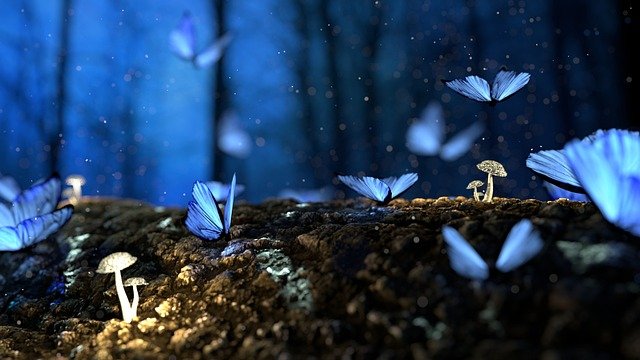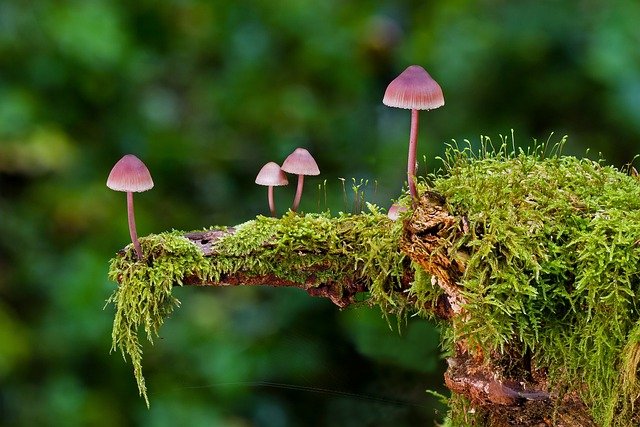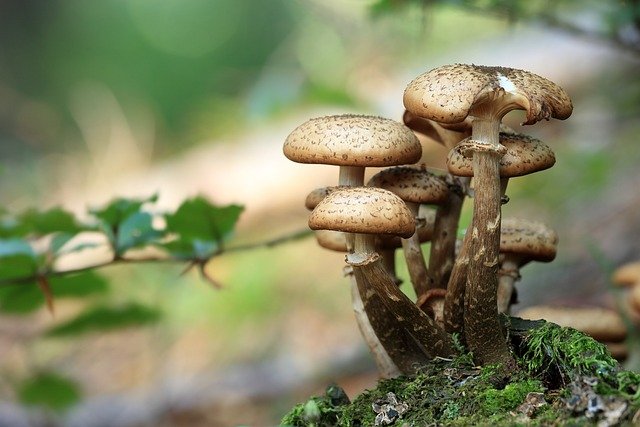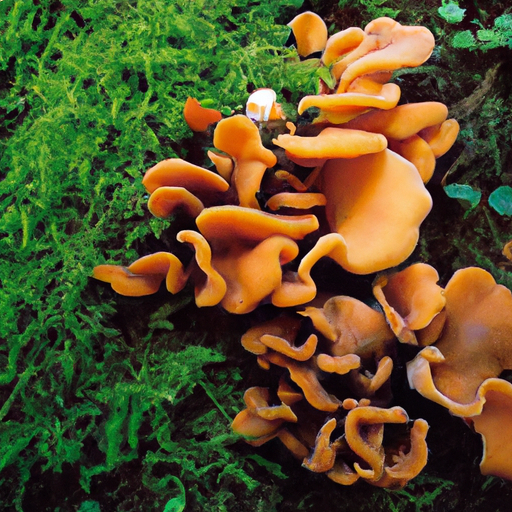In this article, you will learn about the basics of mycology and its connection to mushrooms. You’ll discover interesting facts about mushrooms, including their health benefits and their potential impact on our diets. We will also explore the fascinating world of mycology and how it connects to the study of fungi. Whether you’re a mushroom enthusiast or simply curious about this topic, this article will provide you with a friendly and informative introduction to mycology.
Mycology is the study of fungi, and it plays a crucial role in understanding mushrooms and their various applications. By gaining a basic understanding of mycology, you’ll be able to appreciate the role that fungi play in our environment, in medicine, and even in the culinary world. From learning about different types of fungi to understanding their life cycles and ecosystem functions, mycology provides a fascinating and in-depth exploration of the world of mushrooms. So, let’s dive into the basics of mycology and discover the wonders of these incredible organisms together!
Introduction to Mycology
Mycology, the study of fungi, is a fascinating field that encompasses the exploration of the diverse world of mushrooms. From ancient beliefs and superstitions to the significant contributions of major mycologists throughout history, mycology has a rich and captivating history. Understanding the importance of studying fungi is crucial, as it plays a vital role ecologically, environmentally, and even in medical and pharmaceutical applications.

What is Mycology?
Definition of Mycology
Mycology is the scientific study of fungi, including their biology, genetics, taxonomy, ecology, and medical applications. Fungi are unique organisms that play various ecological roles and have both beneficial and detrimental effects on the environment and human health.
Origin of the term ‘mycology’
The term “mycology” has its roots in Greek, where “mykes” means mushroom and “logos” stands for the study or science of. Coined by German botanist Heinrich Anton de Bary in the 19th century, mycology emerged as a distinct branch of science.
History of Mycology
Ancient beliefs and superstitions about fungi
Throughout history, fungi have intrigued humans with their mystifying properties. In ancient times, mushrooms were associated with mythical stories and supernatural powers. Cultures around the world revered mushrooms and believed in their mystical abilities. For instance, in ancient Egypt, mushrooms were considered a delicacy of the gods, and in China, they were regarded as the “elixir of life.”
Contributions of major mycologists throughout history
The field of mycology has been shaped by the contributions of numerous influential scientists. One of the pioneers of mycology is Swedish mycologist Elias Magnus Fries, who developed a classification system for fungi based on spore-bearing structures. Other notable mycologists include the American Charles Horton Peck, who extensively studied and described North American fungi, and the British mycologist Peter James Darbishire.

Importance of Studying Fungi
Ecological and environmental significance of fungi
Fungi play a vital role in the ecosystem and have profound ecological and environmental significance. They are essential decomposers, breaking down organic materials and facilitating nutrient cycling. Fungi also form symbiotic relationships with plants, such as mycorrhizae, where they help plants absorb nutrients and enhance their growth. Without fungi, the functioning of ecosystems would be severely impacted.
Medical and pharmaceutical applications of mycology
Apart from their ecological importance, fungi also have significant medical and pharmaceutical applications. Many medications, such as antibiotics like penicillin, are derived from fungal sources. Fungi also produce compounds with potential anti-cancer properties and have been used in traditional medicine for centuries. Studying mycology can lead to the discovery and development of novel drugs and treatments.
Parts of a Fungus
To understand the complexity of fungi, it is essential to grasp the basic components of a fungus.
Mycelium
The mycelium is the vegetative part of a fungus and consists of a network of thread-like structures called hyphae. The mycelium absorbs nutrients from the environment and is responsible for the growth and expansion of the fungus.
Fruiting body
The fruiting body, commonly known as the mushroom, is the reproductive structure of a fungus. Mushrooms come in various shapes, sizes, and colors and serve as a means for fungi to disperse their spores.
Spores
Spores are the tiny reproductive units of fungi. They are produced by the fruiting body and are dispersed into the environment to initiate new fungal growth. Spores can survive in harsh conditions and play a crucial role in the life cycle of fungi.

Classification of Fungi
Fungi exhibit incredible diversity, with over 120,000 known species. To make sense of this vast array of organisms, mycologists have developed classification systems based on various characteristics.
Main groups of fungi
The main groups of fungi include Ascomycetes, Basidiomycetes, Zygomycetes, and Deuteromycetes. Ascomycetes, commonly known as sac fungi, include yeasts and many edible fungi. Basidiomycetes, or club fungi, include mushrooms, puffballs, and brackets. Zygomycetes, or pin molds, include organisms like bread molds. Deuteromycetes, or imperfect fungi, are a group that does not fit into the other three major groups.
Characteristics used for fungal classification
Fungal classification is based on several characteristics, including spore color, presence of fruiting bodies, type of hyphae, and mode of reproduction. By analyzing these features, mycologists can classify fungi into their respective groups and understand their evolutionary relationships.
Fungal Life Cycle
Fungi have diverse methods of reproduction, including sexual and asexual processes. Understanding the fungal life cycle sheds light on their reproductive strategies.
Reproduction methods of fungi
Fungi reproduce through the production of spores. In sexual reproduction, two fungal hyphae fuse and exchange genetic material to form a zygote. This zygote develops into a spore-producing structure. In asexual reproduction, fungi produce spores directly from the parent organism, without the fusion of hyphae.
Alternation of generations in some fungal species
In certain fungal species, an alternation of generations occurs, similar to plants. These fungi have a haploid and diploid phase in their life cycle, where they alternate between producing spores via sexual reproduction and reproducing asexually. This alternation allows for genetic variation and adaptability among fungal populations.

Ecology of Fungi
Symbiotic relationships with plants and animals
Fungi form symbiotic relationships with plants and animals, playing essential roles in their survival and growth. Mycorrhizal fungi associate with plant roots, aiding in nutrient absorption and water uptake. Lichens represent a unique symbiotic relationship between fungi and algae or cyanobacteria. Fungi also live in the guts of animals, assisting in digestion and nutrient absorption.
Decomposition and nutrient cycling
Fungi are the primary decomposers in ecosystems, breaking down organic matter and recycling nutrients back into the environment. Without fungi, dead plant and animal material would accumulate, leading to the imbalance of nutrient cycles in ecosystems. The decomposition process carried out by fungi is crucial for maintaining a healthy and functioning environment.
Fungi and Human Health
Beneficial effects of fungi on human health
Certain fungi have beneficial effects on human health. For instance, some species of fungi are used in the production of antibiotics, combating bacterial infections. Fungi also have potential anti-inflammatory properties and may play a role in reducing inflammation-related diseases. Furthermore, mushrooms are a nutritious food source, rich in essential vitamins, minerals, and antioxidants.
Harmful effects of fungi on human health
On the other hand, some fungi have detrimental effects on human health. Toxic mushrooms, if ingested, can cause severe poisoning or even death. Fungal infections, such as candidiasis and aspergillosis, can affect immunocompromised individuals and lead to serious health complications. It is essential to be aware of the potential risks associated with fungi.

Conclusion
Mycology is a multifaceted field that encompasses the study of fungi, their biology, ecological roles, and medical implications. Understanding the basics of mycology not only provides insights into the incredible diversity of fungi but also reveals their significance in various aspects of our lives. From their ecological contributions to their potential medical applications, fungi continue to captivate scientists and offer endless possibilities for further research and exploration. So, embrace the realm of mycology and delve into the mysterious world of mushrooms, unraveling the secrets that nature has to offer.


